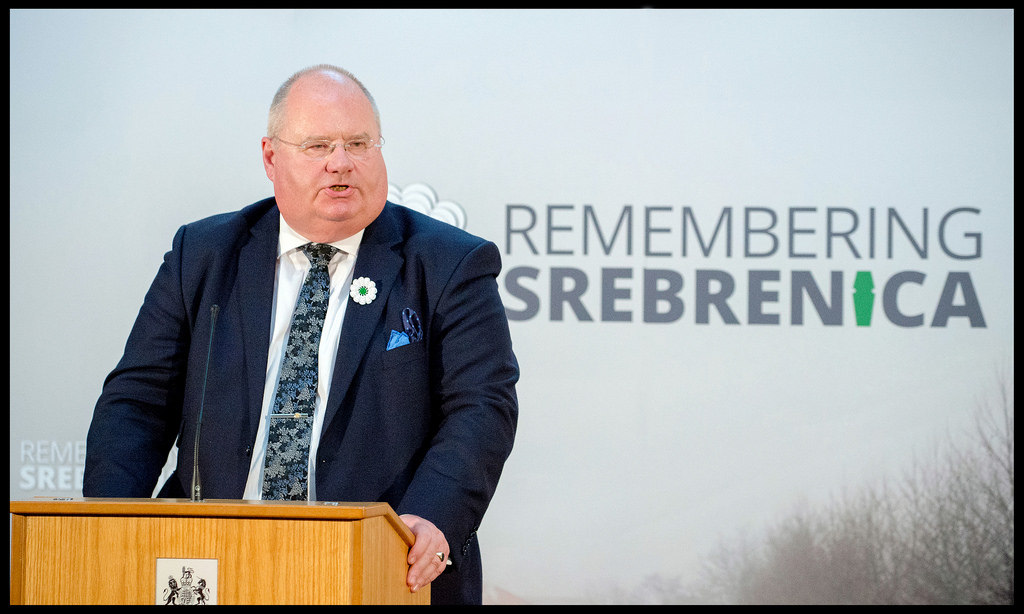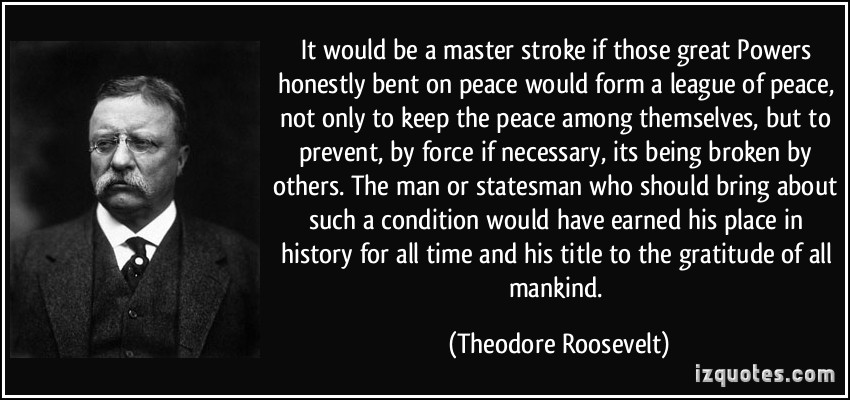
Views: 283
Understanding soft power in politics and diplomacy
French Emperor Napoleon I, was convinced that only two powers existed in the world: the sword and the mind. Sword can prevail over the mind in a short time but in the long run, he believed that the mind would beat the sword. As the mind is mightier than the sword is why the concept of soft power attracts very much attention across the world becoming more and more important for diplomacy and international relations. Power, in general, is a part of the relationship among and between the actors – in global politics and international relations mainly between the states. Both power in general and soft power, in particular, have to be understood in the context of connectedness. The roles of knowledge and education are of special significance in the process of making power while cultural promotion and public diplomacy are crucial means for both increasing and applying soft power in certain areas.
The phenomenon of power, in general, is one of the most researched and discussed among all phenomena in politics, international relations, and world affairs while the concept of soft power is in contemporary post-Cold War diplomacy probably mostly accepted method among policy-makers in dealing with other political actors. After the Cold War, power in world politics and international relations is distributed in three dimensions. On the top, military power is still largely unipolar and the USA is likely to remain supreme for some time. However, on the mid-level, economic power is multipolar with the USA, China, the European Union, and Japan as the major players, and others gaining in importance (India, Brazil, South Africa). On the bottom level is the realm of transnational relations that cross borders outside of government control including non-state actors. On this level, power is widely diffused.
The term soft power was invented by the American international relations analyst, Joseph S. Nye[i] in debating the question of possible declination of the US power and diplomatic influence in the late 1980s during the last years of the Cold War. Soft power refers to the capability of an actor, usually but not necessarily a state, to influence what others do through persuasion. Soft power, according to its coiner Nye, is the ability of the actor to get what it wants by using the method of attraction rather than power, coercion, or payments. This attraction is resulting from the arises of the attractiveness of the culture of the country or other actors, as well as political ideals, and politics. In principle, when policies of one actor are evaluated as legitimate by others then the actor’s soft power is enhanced. In other words, the authentic notion of the term soft power was an instrument or method of persuasion or the ability to change the (political) behavior or direction of others for the sake to get desired results by attraction and co-optation as opposed to power and coercion.
Soft power is a power based on culture, ideology, and/or general reputation and it is used in world politics to set the global agenda and shape the preferences of others. Unlike hard power, soft power consists of cultural and reputational factors that produce prestige, and it is more effective and durable than hard power for the reason of an actor’s preferences are seen as attractive, acceptable, and above all legitimate. Soft power attracts or co-opts people and it does not coerce them. It influences people by a method of appealing to them but not forcing them to comply. Therefore, the concept of soft power covers certain attributes which are including culture, values, ideas, etc., and collectively representing different, but, in principle, not necessarily lesser, forms of influence if compared to hard power (for instance, a role of the Roman Catholic Church and pope in the process of destruction of the communist system in East-Central Europe). Hard power, in essence, implies more direct and forceful measures which are in majority of cases involving the threat or use of armed force or economic sanctions/coercion (for instance, NATO’s aggression on the Federal Republic of Yugoslavia in 1999). Soft power is, nevertheless, neither “sticks nor carrots” but a third way of achieving certain aims of different nature. Anyway, soft power is going beyond simple influence that can rest on hard power threats, both diplomatic or military, as well as financial payments. The usual method used within the framework of soft power is the involvement of persuasion and encouragement which are allegedly or really rooted in shared norms, values, moral authority, and beliefs. Shortly, to exercise soft power relies on persuasion (ability to convince by argument), and on the ability to attract.[ii]
The concept of soft power is as well as founded on the viewpoint that language or discourse is one of the crucial sources of power for the very reason that it imposes specific interpretations and meanings upon political life. However, in turn, those who are controlling the so-called “meaning of events” and institutions in world politics and international relations are able to influence others to think as they are thinking but ignoring at the same time alternative interpretations. Therefore and consequently, soft power is used or misused for the purpose of subjugation of certain individuals or the group of people by others who, in fact, manipulate them.
The 2010 index of soft power ranks France, the GB, the USA, Germany, and Switzerland as the five states with the greatest soft power.[iii] Small states often use smart power strategies like Norway with some 5 million inhabitants enhanced its attractiveness, for instance, with legitimizing policies in peacemaking and development assistance that enhance its soft power. On the opposite side, for instance, there is China, a rising economic, financial, political, and military power, has decided to invest in soft power resources for the reason to make its hard power look less threatening to its neighbors.
Soft power and structural power
As a matter of fact, from the time when the concept of soft power was created, it very quickly became accepted and further elaborated by many statesmen, politicians, and political scientists being thoroughly embedded in the discussions upon the methods used in diplomacy in international relations.[iv] The concept of soft power during the last 30 years but especially after 9/11 was given a high level of attention and being applied deeply by US diplomacy but recently it went beyond the US diplomatic measures as other great powers like Russia and China are using soft power in foreign relations as well as to accomplish their geopolitical and economic aims.[v]
Nevertheless, in all practical combinations of usage, soft power is strongly related to structural power – the power to fix the “rules of the game” in politics and structure the choices of other actors.[vi] Such kind of power can fluctuate from reputational and cultural factors (for instance, English language as contemporary lingua franca) to possession of education, expertise, and particular knowledge, which allow some powerful leaders to impose rules and make others follow those “rules of the game”. Structural power was used even in the 19th century like by Great Britain when London exercised a system of free trade and expanded and upheld international law. A similar case was done after WWII by the US when Washington enjoyed unique structural power that allowed it to construct and maintain the Bretton-Woods system of international and transnational[vii] economic institutions of, for instance, the World Bank, the IMF, or the General Agreement on Tariffs and Trade.[viii]
Short historical background of soft power
Soft power is a worm of cultural power in the broadest sense of the meaning and as such existed historically long before it was formally created as a concept within the framework of international relations after the Cold War. There are many historical examples of used soft power by some European and later other great powers in global politics and foreign affairs. For instance, Spain in the 17th century as a center of the diffusion of European culture and civilization succeeded to create influential cultural attractions in Europe, for example, in the court life in Paris. The elite strata in France totally accepted Spanish fashion in general. The Decembrist in Russia in 1825 have been influenced by the French Enlightenment particularly of Voltaire and Rousseau which became generated into an uprising to challenge the absolute rule of the Russian tsars (emperors). These examples as many others illustrate the use of soft power in the process of spreading the ideas or ideologies and influencing others by them.
Religious philosophy is as well as a type of cultural condition with its soft power influences. For instance, the traditional philosophy of Confucianism is putting special stresses on the importance of governance by kindness, generosity, and virtue in both foreign policy and inner administration. Confucianism played a crucial role in the formation of the concept of the so-called “Asian values” in the opposition to liberal Western values. The concept refers to the East Asian view of human rights being associated with several East and South-East Asian countries and nations, including Malaysia, Singapore, and China. Many of the regional political leaders and other public figures claim that individualistic human rights associated with the liberal Western culture and its individualistic, self-seeking values are culturally alien to their nations and countries.
Nevertheless, the best examples of successful anti-individualist societies are in Asia that is true especially in Japan, China, Taiwan, both Koreas, and Singapore. In fact, many of “Asian values” are associated with Confucianism, as a philosophy that is alternative to the idea of individualism supported by the liberal Western political philosophy and societies. Individualism as a belief in the supreme importance of the individual over any social group or collective body cannot be accepted in East and South-East Asia as those countries has different cultures, cultural values, and historical development based focally on the concept of the “Asian values”. Those values are stressing the importance of the community or the collective in general, but not of the individual. These cultural characteristics are embodied in the socio-political values of harmony, consensus, unity, and community. The human rights regimes are seen by society as legitimate only when they reflect the community’s collective values. Consequently, national human rights regimes must necessarily “fit” local cultural and social values. According to Francis Fukuyama, Confucianism is both hierarchical and non-egalitarian and characteristic of the community-oriented Asian cultures.
In general, the example of the conflict between the liberal Western values and “Asian values” reflects the importance of soft use of power in the art of the state, international relations, and foreign policy and was, for instance, a key factor in assuring the effectiveness of the Chinese hierarchical international system in the world order regarding East Asian countries. In contemporary terminology, such a way of governance is an example of soft power methodology. From the general point of view concerning Western/Oriental relations, this liberal Western/East Asian conflict of values using the confessional-cultural values as soft power is a good example of how one’s identity can be more or less determined by one’s relationship with the other or others through cultural relations. Therefore, soft power in some cases can be seen as well as another form of cultural hegemony but in some cases, the use of soft power is, in fact, motivated by the particular aim for political dominance. That is the case, for example, in contemporary international relations when liberal Western countries, especially the USA, are using soft power assuming that there are universal (Western) norms and values which have to be valid and must be applied in the rest of the world.
Ex-University Professor
Vilnius, Lithuania
Research Fellow at the Center for Geostrategic Studies
Belgrade, Serbia
vsotirovic@yahoo.com
© Vladislav B. Sotirović 2023
Personal disclaimer: The author writes for this publication in a private capacity which is unrepresentative of anyone or any organization except for his own personal views. Nothing written by the author should ever be conflated with the editorial views or official positions of any other media outlet or institution.
[i] Joseph S. Nye (b. 1937) is an American academic and foreign policy analyst. He was together with Robert Keohane one of the leading theorists of the so-called phenomenon of the “complex interdependence”. The phenomenon was important as offered an alternative position to the traditional belief by the realists in the anarchical relations between the actors (states) in international relations. He was requiring that the US administrations after the Cold War redefine the American national interest to be compatible with new global processes like turbo-globalization and the information revolution (the Internet). He simply recognized that after 1990, there are new conditions of global interdependence placing greater stress on multilateral cooperation. He is especially associated with the concept of soft power in politics and diplomacy or the ability to attract and persuade. This term was coined exactly by him and his book Soft Power: The Means to Success in World Politics (New York: Public Affairs, 2004) is still one of the most influential in the studies of international relations after the Cold War.
[ii] In one word, soft power is “the ability to influence other actors by persuading them to follow or agree to norms and aspirations that produce the desired behaviour” [Andrew Heywood, Global Politics, New York: Palgrave Macmillan, 2011, 214].
[iii] Jonathan McClory, The New Persuaders: An International Ranking of Soft Power, London: Institute for Government, 2010, 5.
[iv] Diplomacy is both a negotiation procedure and communication between states seeking to resolve problems and conflicts without using war measures. Diplomacy is an instrument of foreign policy.
[v] It has to be noted that the general tendency of George Bush Junior administration towards unilateralism and in particular its policy of the War on Terror tremendously damaged the policy of soft power of the USA, especially in the Islamic states.
[vi] In other words, structural power is the ability to shape the frameworks within which global actors relate to one another and, consequently, affecting which kind of order has to be accepted in global politics.
[vii] Transnational: A configuration applicable to events, people, groups, or organizations that takes little or no account of national government or state’s borders. Nevertheless, the meaning of transnational is different from the meanings of international and/or multinational.
[viii] Bretton Woods is a New Hampshire (USA) resort in which 44 states signed a common agreement in 1944 with the purpose to establish a post-WWII international monetary and payments system. Therefore, in the literature, the term Bretton Woods system is referring to the institutions and their functioning which have been established in 1944 in Bretton Woods, in fact, as the post-WWII mechanism of the US’ structural power. The process started as the US-British wartime cooperation. The US dollar was functioning as a focal currency within the system, with dollar outflows eclipsing the resources of the IMF in financing international trade and payments. As a direct consequence of such practice, the US’ Treasury and Federal Reserve became mainly responsible and visibly dominant in the Bretton Woods system through their discretionary manipulation of the dollar, thus side-stepping the prescribed role of the IMF. However, in the course of time, the US dollar became overvalued as partly the US failed to adjust to intensified trade competition and to keep inflation in check. Consequently, confidence in the exchange rate parities declined. On another side, it was growing off-shore capital markets (for instance, Asian tigers) which exerted hard pressure on the system of exchange rate and international payments. The US administration failed in its commitment to convert dollars to gold at a fixed rate. The USA unilaterally negated the system in August 1971. Attempts to reform and revive the system failed and finally, it officially came to an end in 1976.
Origins of images: Facebook, Twitter, Wikimedia, Wikipedia, Flickr, Google, Imageinjection, Public Domain & Pinterest.
Read our Disclaimer/Legal Statement!
Donate to Support Us
We would like to ask you to consider a small donation to help our team keep working. We accept no advertising and rely only on you, our readers, to keep us digging the truth on history, global politics, and international relations.
FOLLOW US ON OUR SOCIAL PLATFORMS









